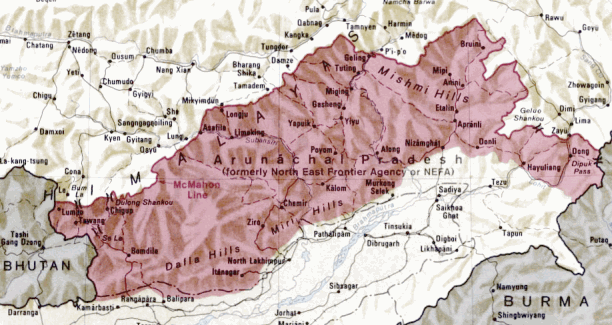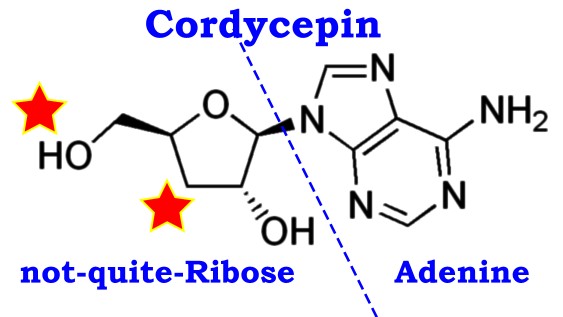
My chief memory of this is a Giles cartoon of the time, showing a policeman investigating a dispute between two neighbouring restaurants, one Chinese, one Indian.
Now Chinese soldiers are again crossing the McMahon line, but this time not as a military venture, but in search of a prized Chinese medicine. This is known in the West as the Caterpillar Fungus, but in Chinese as "Winter worm, summer grass" (in Tibetan it is Summer herb, winter worm.) This is one of nature's gruesome productions: the fungus germinates in a sub-surface moth larva, kills and mummifies it, and then produces a fruiting body which protrudes from the ground.
In China it is highly sought after, having a reputation as an aphrodisiac and curing fatigue and threating cancer. How valid these claims are I do not know, but the fungus (Cordyceps sinensis) is now cultivated artificially in a culture medium or on grain, and contains many pharmacologically active substances.
So we've had the "love", and the threat of war, but what about the heterocycles?

This is cordycepin, one of the compounds isolated from the fungus. On the right is the heterocyclic compound andenine, one of the well known nucleotides found in DNA and RNA. (The term heterocyclic applies because of the nitrogens incorporated into the carbon ring structure – with so many one wonders if there is not a potential explosive there!) On the left is a molecular unit almost like the ribose which forms part of the chain of the long RNA molecule. But while the upper star is next to an oxygen atom which would form one link in the chain, the lower one points to where a ribose oxygen atom is missing. Perhaps this "imitation" of a building block of RNA accounts for its potential use as an anti-tumour agent. This idea suggests itself after watching this video of a Nobel Laureate at Lindau, explaining the wonders of RNA.
But I wonder, what function does this molecule have in the chemical arsenal of the fungus?




Comments